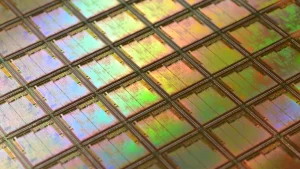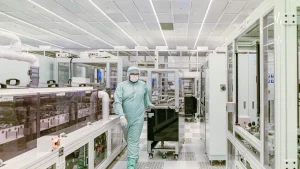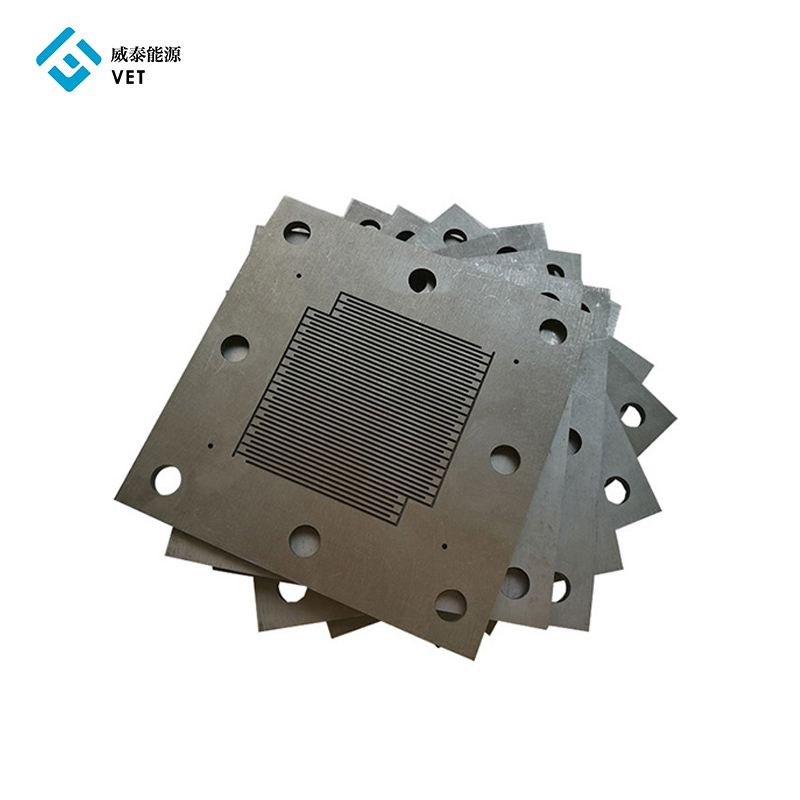
CVD-coated graphite plates are transforming hydrogen fuel cell manufacturing by tackling key challenges in efficiency and durability. These advanced CVD-Coated Graphite Plates significantly improve energy efficiency, meeting stringent regulatory demands for cutting-edge materials that help reduce emissions. For example, the EU’s Carbon Border Adjustment Mechanism has driven the adoption of high-performance materials like graphite. Ningbo VET Energy Technology Co., Ltd leads the way with innovations such as CVD SiC Coating, TAC Coating, and CVD TAC Coating, delivering exceptional performance and sustainability. Moreover, GRAPHITE SUSCEPTOR components utilized in the CVD process enhance coating quality, further propelling advancements in green energy technologies.
Key Takeaways
- CVD-coated graphite plates make hydrogen fuel cells last longer and work better. They are important for clean energy solutions.
- These plates resist rust and block gases, keeping them safe and working well in tough conditions.
- Ningbo VET Energy Technology Co., Ltd is a leader in CVD technology. They create special coatings to improve graphite plates.
- Car makers use CVD-coated graphite plates because they help cars use less fuel and drive farther.
- Future CVD technology will use better materials, smart designs, and eco-friendly methods to improve hydrogen fuel cells.
Hydrogen Fuel Cells and Their Role in Green Energy
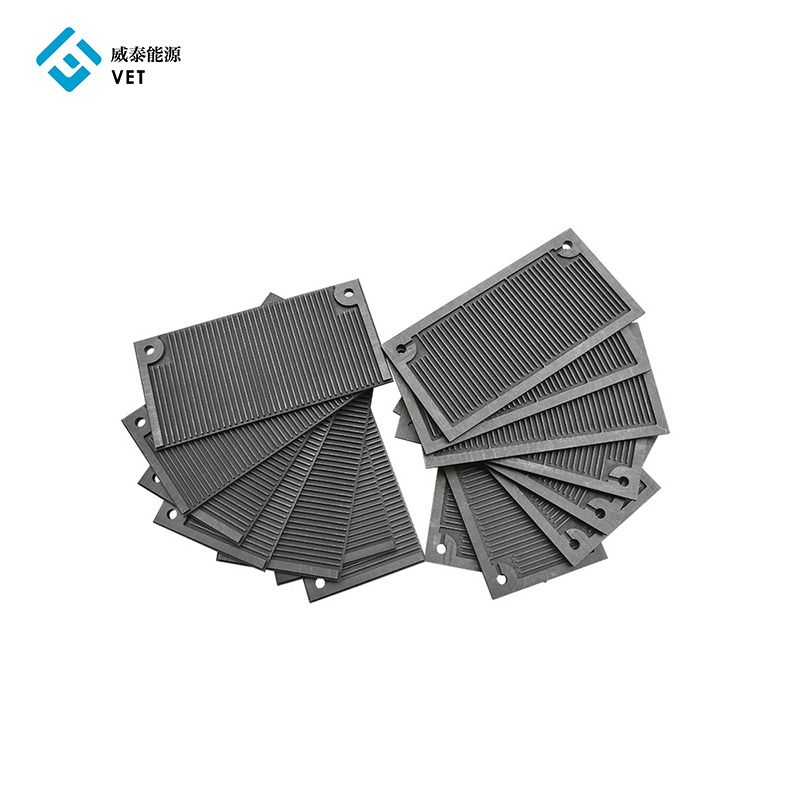
What Are Hydrogen Fuel Cells?
Hydrogen fuel cells are electrochemical devices that convert hydrogen and oxygen into electricity, water, and heat. Unlike traditional combustion-based energy systems, fuel cells operate without burning fuel, making them a clean and efficient energy source. The core mechanism involves hydrogen molecules splitting into protons and electrons at the anode. The electrons travel through an external circuit, generating electricity, while protons pass through an electrolyte to combine with oxygen at the cathode, forming water as the only byproduct.
Hydrogen fuel cells stand out for their ability to produce zero carbon emissions during operation, aligning with global sustainability goals.
The Importance of Hydrogen Fuel Cells in Sustainable Energy
Hydrogen fuel cells play a pivotal role in reducing greenhouse gas emissions and advancing renewable energy adoption. They provide a versatile energy solution for various applications, including transportation, power generation, and industrial processes. For instance:
- Hydrogen can be produced from renewable sources like wind and solar, enhancing energy security.
- On-site hydrogen production minimizes energy transport costs and improves energy management.
The growing adoption of hydrogen fuel cells is evident in global trends. In 2023, approximately 60,000 hydrogen fuel cell vehicles (FCEVs) were sold worldwide. By 2030, green hydrogen is projected to account for 10-15% of total hydrogen production, reflecting its increasing significance in sustainable energy systems.
| Statistic Description | Value |
|---|---|
| Global Hydrogen Production (2023) | ~94 million metric tons |
| Projected Green Hydrogen Share by 2030 | ~10-15% of total production |
| Hydrogen Fuel Cell Vehicle (FCEV) Sales (2023) | ~60,000 units globally |
Key Components of a Hydrogen Fuel Cell System
A hydrogen fuel cell system comprises several critical components that ensure efficient operation:
- Fuel cell stack: The core unit where the electrochemical reaction occurs.
- Anode loop: Regulates hydrogen supply and pressure while preventing nitrogen and water accumulation.
- Cathode loop: Delivers oxygen through an air compressor and manages oxygen supply during load changes.
- Cooling loop: Maintains optimal temperature using pumps, fans, and valves.
- DC/DC converters: Enhance system intelligence with diagnostic capabilities and support low-voltage, high-current operations.
These components work in harmony to optimize performance, making hydrogen fuel cells a reliable and sustainable energy solution.
Bipolar Plates: The Backbone of Hydrogen Fuel Cells
Functions of Bipolar Plates in Fuel Cells
Bipolar plates serve as a critical component in hydrogen fuel cells, performing multiple essential functions. They distribute gases like hydrogen and oxygen evenly across the fuel cell stack. This ensures that the electrochemical reaction occurs efficiently. Additionally, they conduct electricity between adjacent cells, enabling the flow of electrons through the system. Bipolar plates also manage heat by dissipating it uniformly, maintaining the optimal operating temperature of the fuel cell. Furthermore, they act as a barrier, preventing hydrogen and oxygen from mixing, which could compromise the system’s safety and efficiency.
Why Graphite Is the Ideal Material for Bipolar Plates
Graphite has emerged as the material of choice for manufacturing bipolar plates due to its unique properties. Its high electrical conductivity ensures efficient electron transfer, a critical requirement for fuel cell performance. Graphite’s low density contributes to the lightweight design of fuel cell stacks, making it ideal for applications like automotive fuel cells. Moreover, its excellent corrosion resistance ensures durability, even in the harsh chemical environment of a fuel cell. The ease of mass-manufacturing graphite plates further enhances their appeal for large-scale production.
| Advantage | Graphite Composites | Other Materials |
|---|---|---|
| Electrical Conductivity | High | Variable |
| Density | Low | Higher |
| Corrosion Resistance | Excellent | Moderate to Low |
| Mass-Manufacturing Ease | High | Low |
This combination of properties makes graphite superior to alternative materials, ensuring reliability and efficiency in hydrogen fuel cell systems.
Limitations of Uncoated Graphite in Fuel Cell Applications
Uncoated graphite, despite its advantages, faces challenges in fuel cell applications. Prolonged exposure to the fuel cell’s acidic environment can lead to gradual material degradation. This reduces the plate’s lifespan and impacts overall system performance. Additionally, uncoated graphite may exhibit higher gas permeability, which could compromise the separation of hydrogen and oxygen. To address these issues, advanced coatings like Chemical Vapor Deposition (CVD) are applied. These coatings enhance the durability and functionality of graphite plates, ensuring they meet the rigorous demands of modern fuel cell technology.
The Impact of CVD-Coated Graphite Plates
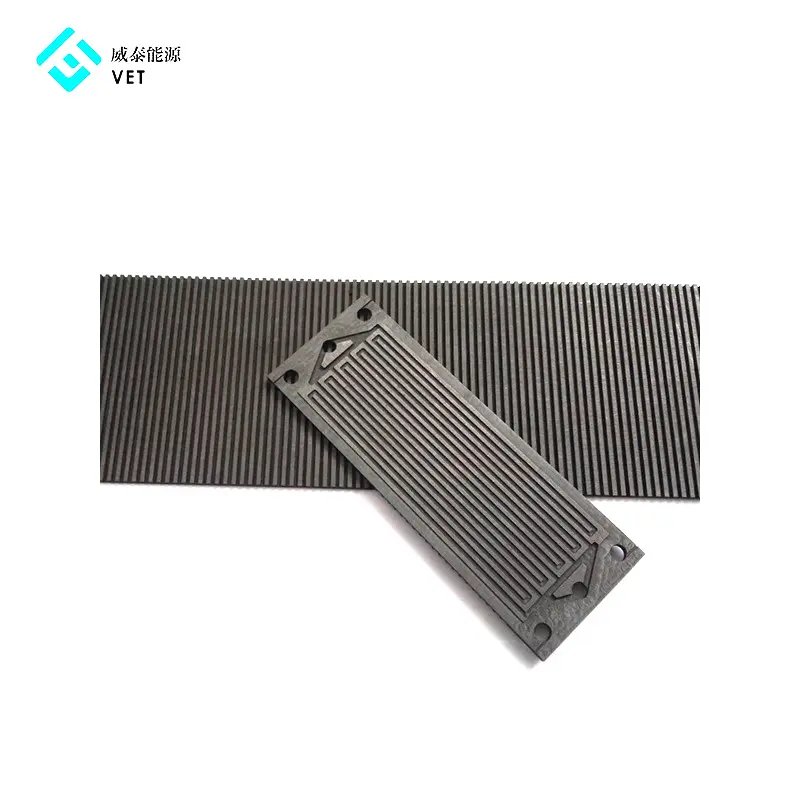
How CVD Coating Enhances Graphite Plates
Chemical Vapor Deposition (CVD) coating significantly improves the performance of graphite plates used in hydrogen fuel cells. This advanced coating process creates a uniform, dense layer on the surface of the graphite. The layer enhances the material’s resistance to corrosion, which is critical in the harsh chemical environment of fuel cells. By forming a protective barrier, the coating prevents the degradation of graphite when exposed to acidic conditions.
CVD coating also reduces gas permeability. This ensures that hydrogen and oxygen remain separated within the fuel cell, maintaining operational efficiency and safety. Furthermore, the coating improves the electrical conductivity of the plates. This enhancement facilitates better electron transfer, which directly impacts the overall energy output of the fuel cell system. Ningbo VET Energy Technology Co., Ltd has pioneered innovations in CVD coating, ensuring that graphite plates meet the rigorous demands of modern hydrogen fuel cell applications.
Benefits of CVD-Coated Graphite Plates in Fuel Cells
CVD-coated graphite plates offer numerous advantages that make them indispensable in hydrogen fuel cell technology. These benefits include:
- Enhanced Durability: The CVD coating extends the lifespan of graphite plates by protecting them from chemical and mechanical wear.
- Improved Efficiency: The coating’s high electrical conductivity ensures optimal energy transfer, boosting the fuel cell’s overall performance.
- Corrosion Resistance: The protective layer prevents material degradation, even under prolonged exposure to acidic environments.
- Gas Impermeability: The coating minimizes gas leakage, ensuring the safe and efficient operation of the fuel cell.
- Lightweight Design: Despite the added coating, the plates retain their lightweight properties, making them ideal for applications like automotive fuel cells.
These advantages position CVD-coated graphite plates as a cornerstone of hydrogen fuel cell technology. Their ability to enhance performance while maintaining sustainability aligns with global efforts to adopt green energy solutions.
Note: The adoption of CVD-coated graphite plates is not only a technological advancement but also a step toward achieving global sustainability goals.
Comparison with Alternative Coating Methods
CVD coating stands out when compared to other coating methods used for graphite plates. Techniques such as physical vapor deposition (PVD) and electroplating have their merits but fall short in certain critical aspects. The table below highlights the differences:
| Feature | CVD Coating | PVD Coating | Electroplating |
|---|---|---|---|
| Uniformity of Coating | Excellent | Moderate | Moderate |
| Corrosion Resistance | High | Moderate | Low |
| Gas Impermeability | Excellent | Low | Low |
| Electrical Conductivity | High | Moderate | Moderate |
| Durability | High | Moderate | Low |
CVD coating provides superior uniformity and durability, making it the preferred choice for hydrogen fuel cell applications. Ningbo VET Energy Technology Co., Ltd has leveraged this technology to deliver high-performance CVD-coated graphite plates, setting a benchmark in the industry.
Role of Ningbo VET Energy Technology Co., Ltd in Advancing CVD Technology
Ningbo VET Energy Technology Co., Ltd has established itself as a leader in advancing Chemical Vapor Deposition (CVD) technology. As a high-tech enterprise, the company specializes in high-end advanced materials, including graphite, silicon carbide, ceramics, and surface treatment technologies. These materials form the backbone of cutting-edge applications in industries such as photovoltaics, semiconductors, new energy, and metallurgy.
Pioneering Innovations in CVD Technology
The company’s expertise in CVD technology has led to the development of coatings that enhance the performance and durability of graphite plates. For instance, tantalum carbide coatings provide exceptional hardness, thermal stability, and corrosion resistance. These properties ensure that components like semiconductor OEM tools operate efficiently under extreme conditions. By integrating such advanced coatings, Ningbo VET Energy Technology Co., Ltd has significantly improved the durability and efficiency of critical equipment, reducing costs and downtime for its clients.
Enhancing Product Applications Across Industries
Ningbo VET Energy Technology Co., Ltd’s innovations extend beyond hydrogen fuel cells. The company’s products enhance the durability of diffusion kits, improve thermal resistance, and increase operational efficiency across various sectors. These advancements demonstrate the versatility of their CVD technology and its ability to meet the rigorous demands of modern industrial applications.
| Aspect | Description |
|---|---|
| Focus | High-tech enterprise specializing in high-end advanced materials. |
| Technologies | Includes graphite, silicon carbide, ceramics, and surface treatment technologies. |
| Applications | Products are utilized in photovoltaic, semiconductor, new energy, and metallurgy sectors. |
By leveraging its expertise, Ningbo VET Energy Technology Co., Ltd has positioned itself as a key player in the global push for sustainable energy solutions. Their contributions to the development of CVD-coated graphite plates exemplify their commitment to innovation and excellence.
Note: The company’s advancements in CVD technology not only enhance the performance of hydrogen fuel cells but also contribute to the broader adoption of green energy technologies worldwide.
Real-World Applications of CVD-Coated Graphite Plates
Adoption in Automotive Hydrogen Fuel Cells
The automotive industry has embraced hydrogen fuel cells as a sustainable alternative to traditional internal combustion engines. Fuel cell electric vehicles (FCEVs) rely on advanced materials like CVD-coated graphite plates to achieve optimal performance. These plates enhance the efficiency and durability of fuel cells, making them suitable for demanding automotive applications. Their lightweight design contributes to improved vehicle range and fuel economy, while their corrosion resistance ensures long-term reliability.
Countries like South Korea and the United States have made significant strides in adopting FCEVs. South Korea leads with 19,270 fuel-cell vehicles, followed by the United States with 12,283 units. Passenger cars dominate the market, accounting for 82% of total adoption, while buses and trucks represent 9.2% and 8.7%, respectively. This growing adoption highlights the critical role of CVD-coated graphite plates in advancing hydrogen-powered transportation.
Trends in Hydrogen Fuel Cell Manufacturing
The hydrogen fuel cell manufacturing sector is experiencing rapid growth, driven by increasing global demand for clean energy solutions. Industry leaders are scaling up production capacities to meet this demand. For instance:
- Nel has increased its manufacturing capacity tenfold to 360 MW.
- ITM Power has expanded its warehouse space by a factor of ten.
- Thyssenkrupp has achieved 1 GW of alkaline electrolysis capacity.
- John Cockerill reached 350 MW of capacity by Q4 2019.
More than 40 countries have developed national hydrogen strategies, reflecting a global commitment to hydrogen as a key energy source. China aims to have 50,000 FCEVs on the roads by 2025, further emphasizing the importance of advanced materials like CVD-coated graphite plates in supporting this growth.
| Year | Market Size (USD Billion) | Expected Growth Rate (CAGR) |
|---|---|---|
| 2024 | 7.29 | 9.8% (2025-2034) |
| 2034 | 18.41 | N/A |
These trends underscore the need for innovative technologies that enhance fuel cell performance and scalability. CVD-coated graphite plates play a pivotal role in meeting these requirements, ensuring the reliability and efficiency of hydrogen fuel cells.
Performance Data on CVD-Coated Graphite Plates
Performance metrics demonstrate the superiority of CVD-coated graphite plates in hydrogen fuel cell applications. These plates exhibit exceptional durability, maintaining structural integrity under harsh operating conditions. Their high electrical conductivity ensures efficient energy transfer, directly impacting the overall performance of the fuel cell system. Additionally, their gas impermeability enhances safety by preventing hydrogen and oxygen mixing.
The global hydrogen fuel cell market reflects the growing reliance on such advanced materials. By 2024, the market is projected to reach $2,381.3 million, with an impressive compound annual growth rate (CAGR) of 36.6% from 2025 to 2033. By 2033, the market size is expected to soar to $41,900.1 million. These figures highlight the increasing demand for high-performance components like CVD-coated graphite plates, which are essential for scaling hydrogen fuel cell technology.
| Year | Market Size (USD Million) | Expected Growth Rate (CAGR) |
|---|---|---|
| 2024 | 2,381.3 | 36.6% (2025-2033) |
| 2033 | 41,900.1 | N/A |
The adoption of CVD-coated graphite plates represents a significant advancement in hydrogen fuel cell technology. Their ability to enhance efficiency, durability, and safety makes them indispensable in the transition to a sustainable energy future.
Future Innovations in CVD-Coated Graphite Plate Technology
The future of CVD-coated graphite plate technology holds immense potential for advancing hydrogen fuel cell performance and sustainability. Researchers and industry leaders are exploring innovative approaches to enhance the efficiency, durability, and scalability of these critical components. Several key areas of innovation are shaping the next generation of CVD-coated graphite plates.
1. Advanced Coating Materials
The development of new coating materials is a primary focus for improving the performance of graphite plates. Scientists are experimenting with hybrid coatings that combine the properties of multiple materials, such as silicon carbide and tantalum carbide. These hybrid coatings aim to achieve superior corrosion resistance, thermal stability, and electrical conductivity. By leveraging advanced materials, manufacturers can create plates that withstand even harsher operating conditions, ensuring long-term reliability.
2. Precision Manufacturing Techniques
Emerging manufacturing techniques are enabling greater precision in the production of CVD-coated graphite plates. Innovations such as atomic layer deposition (ALD) and plasma-enhanced chemical vapor deposition (PECVD) are being integrated into the coating process. These methods allow for the creation of ultra-thin, uniform coatings with enhanced adhesion properties. Improved precision not only boosts the performance of the plates but also reduces material waste, contributing to cost efficiency and environmental sustainability.
3. Integration with Smart Technologies
The integration of smart technologies is transforming the functionality of CVD-coated graphite plates. Researchers are exploring the incorporation of sensors and monitoring systems directly into the plates. These smart plates can provide real-time data on temperature, pressure, and gas flow within the fuel cell. This information enables predictive maintenance and optimization of fuel cell performance, reducing downtime and operational costs.
Tip: Smart technologies in fuel cells can significantly enhance system efficiency and reliability, paving the way for widespread adoption in various industries.
4. Sustainable Production Practices
Sustainability is becoming a central theme in the development of CVD-coated graphite plates. Manufacturers are adopting eco-friendly production methods, such as using renewable energy sources for the CVD process. Additionally, efforts are being made to recycle and repurpose used graphite plates, minimizing waste and reducing the environmental impact of fuel cell manufacturing. These practices align with global sustainability goals and enhance the appeal of hydrogen fuel cells as a green energy solution.
5. Customization for Specific Applications
Future innovations also include the customization of CVD-coated graphite plates for specific applications. For instance, plates designed for automotive fuel cells may prioritize lightweight construction and high power density, while those for stationary power generation may focus on durability and cost-effectiveness. Tailoring the design and properties of the plates to meet the unique requirements of different applications ensures optimal performance across various use cases.
6. Collaborative Research and Development
Collaboration between industry leaders, academic institutions, and government agencies is driving innovation in CVD-coated graphite plate technology. Joint research initiatives are accelerating the discovery of new materials and processes, while government funding supports large-scale production and commercialization. These partnerships are essential for overcoming technical challenges and bringing advanced fuel cell technologies to market.
The continuous evolution of CVD-coated graphite plate technology promises to unlock new possibilities for hydrogen fuel cells. By addressing current limitations and exploring cutting-edge solutions, the industry is poised to make significant strides toward a sustainable energy future.
CVD-coated graphite plates have revolutionized hydrogen fuel cell manufacturing by addressing critical challenges in efficiency, durability, and sustainability. Their advanced properties, such as enhanced corrosion resistance and gas impermeability, make them indispensable for green energy applications. These plates enable industries to meet stringent environmental standards while optimizing performance.
Ningbo VET Energy Technology Co., Ltd has played a pivotal role in advancing this technology. Their innovative coatings and precision manufacturing techniques have set new benchmarks, driving the global transition toward sustainable energy solutions. Their commitment to excellence ensures a brighter, greener future powered by hydrogen fuel cells.
FAQ
What makes CVD-coated graphite plates essential for hydrogen fuel cells?
CVD-coated graphite plates enhance durability, corrosion resistance, and gas impermeability. These properties ensure the safe and efficient operation of hydrogen fuel cells, making them indispensable for green energy applications.
How does Ningbo VET Energy Technology Co., Ltd contribute to this technology?
Ningbo VET Energy Technology Co., Ltd pioneers advancements in CVD technology. Their innovative coatings and precision manufacturing techniques improve the performance and reliability of CVD-coated graphite plates.
Are CVD-coated graphite plates suitable for automotive applications?
Yes, these plates are lightweight and durable, making them ideal for automotive hydrogen fuel cells. They improve vehicle range, fuel economy, and long-term reliability.
What are the environmental benefits of using CVD-coated graphite plates?
These plates support hydrogen fuel cells, which produce zero emissions during operation. Their durability reduces waste, aligning with global sustainability goals.
How do CVD-coated graphite plates compare to other materials?
They outperform alternatives in corrosion resistance, gas impermeability, and electrical conductivity. This makes them the preferred choice for hydrogen fuel cell manufacturing.

